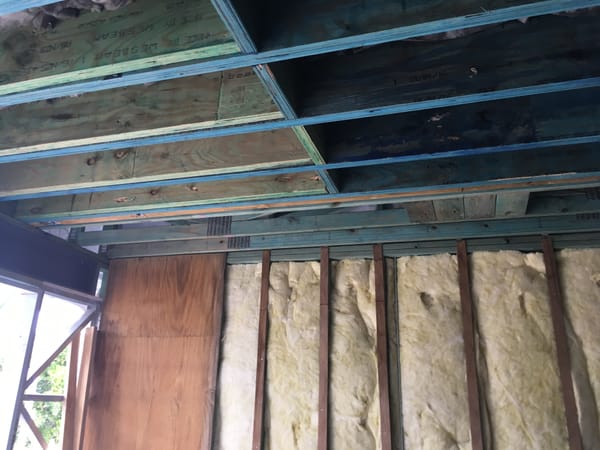In residential construction (all construction really), effective communication between clients and builders is paramount. One important aspect that often goes overlooked is the clear communication and documentation of client-installed services. Whether it's adding ducted air-conditioning, audio systems, security/network cabling, or vacumaid ducting, informing your builder of your intentions before construction begins can prevent a host of issues down the line.
In this article we explain why it is important to notify your builder about any additional services, the implications of failing to do so, and how proper communication can lead to a smoother, more efficient building process.
If you wish to install additional services during the frame stage—such as ducted air-conditioning, audio, security cabling, or vacumaid ducting—it is important to inform your builder in writing before the contract documentation is prepared.
This is a standard clause in building contracts to address client-installed services.
Informing your builder about planned installations is vital as any on-site impacts the work of others onsite, whether you like it or not. The effects can be physical, with too many people working simultaneously leading to rushed, subpar work, or monetary, with delays affecting planned work, increased costs and ultimately the completion of your home.
Notifying your builder about client-installed services ensures all parties involved are informed, and sufficient time is allocated for these services to be installed.
It is important to note that any Client installed service will only be “fitoff” after the prescribed Handover date of the house and no time before.
The reason the above clause is added is this: air conditioning contractors (for example) are notorious at over cutting switch plate locations, return air vents, putting their foot through the ceiling or just generally additional paint touch ups.
If contractors work on a finished home, they tend to be more careful and are responsible for any damages they cause.
All contractors carrying out work on your builders construction site must have a current WH&S Blue Card as well as have a work method statement available for viewing by your builder prior to any work starting onsite.
This clause is important. I don’t believe in my 25 years as a builder/construction manager that I had one client who ever provided this documentation to me.
Ill briefly explain why this is important.
Firstly, If your contractor does not have his WH&S blue card they are not permitted onsite at all.
Secondly, a work method statement must be kept by the builder and be accessible should a government WH&S officer present onsite at the time your contractor is working, and request paperwork. The WH&S officer may request to see the safe work method statement (SWMS) from the builder. If the builder cannot produce this document they may be fined & prosecuted for failing to comply with the WH&S act.
Thirdly, say your contractor uses some highly flammable product or uses a gas that requires respirators. If the builder does not have the work method statement (and attached material safety data sheet (MSDS) there is no way of knowing about this safety hazard. An unassuming co-worker may be onsite whilst your contractor is there, then be overcome with noxious fumes and subsequently sue the principal contractor (your builder) and you for failing to discharge your obligations to protect the health & safety of those onsite.
You may laugh at this. Sure, it may never happen.
I’ve been to court to help a contractor defend himself against a “Grievous Bodily Harm” lawsuit brought about by the WH&S department. I can assure you there is no laughing in court, just facts, police (lawyers), legal teams doing their job to get convictions.
In court you will look stupid for turning a blind eye to providing paperwork that is requested of you. Its only paperwork. Just get it, its not hard at all.
Ducted air-conditioning installations carried out by Owners do attract a surcharge payable to your builders ceiling insulation contractors for the additional work imposed due to the presence of air conditioning ducts throughout the ceiling cavity.
These contractors spend additional time shifting and relocating duct work to allow installation of glass wool insulation into the ceiling cavity. Your time is valuable and so is theirs.
The installation of the following items (if not in your contract to be completed by Your Builder) will not be permitted until after the Practical Completion handover:Floor coverings to main areas or bedroomsWindow treatments (curtains, blinds etc)Security systems, vacuum-maid, air conditioningSecurity screens to windows or doorsPergola or patiosSwimming pools (refer to ‘Your Builders’ Swimming Pool Policy)Brick or concrete driveways, footpaths or patio floorsFencing or retaining wallsLandscaping (including irrigation systems, turf and garden beds).
All of these items directly effect the builders ability to complete the home without incurring additional expense.
Carpet installers always damage skirting boards when installing carpet. Paint touch ups are always required (expense).
Curtain & blind installers do all sorts of funny things. Hanging curtains from window architraves (a non structural timber finishing element) rather than fixing them to structural timber elements like studs, jack studs (beside window openings, behind gyprock) or to window lintels (spanning above the window openings).
When they do this both paint & gyprock repairs are normally required.
Security systems, much the same as A/C fitoffs. Often they cut holes in the gyprock in wrong positions thus requiring gyprock, paint touch ups (expense & time).
Driveways, concrete works & paths: one of my favorites. Clients in a rush to get everything done often book all this work in without informing the builder. Unbeknownst to the owner there is a litany of inspections required to certify the completion of a residence.
It has happened to me more than once that a client has had concrete pathways installed around the perimeter of the dwelling (without my knowledge) then the final plumbing inspection has failed because the concretor has used a sewerage ORG (overflow relief gully) as a storm water yard gully.
This renders the ORG useless, the plumbing final is failed and the final building permit cannot be obtained. The only solution to this situation is to rip up the concrete pathway installed (normally much larger an area than just around the ORG) and re do it again.
All this extra work and time because work was done without the builders knowledge.
The key to managing client-installed services and items is communication and documentation. Make sure everyone is informed and that work can be scheduled appropriately. This not only ensures a smoother construction process but also shows respect for your builder and their work.
In conclusion, clear communication and thorough documentation of client-installed services are paramount in residential construction projects. By informing your builder of your plans in advance and ensuring all necessary paperwork and safety measures are in place, you can prevent unnecessary delays and additional costs.
This proactive approach fosters a collaborative environment where both the builder and client can work towards a successful and timely project completion. Respecting these processes and maintaining open lines of communication ultimately leads to a more efficient construction process and a better-finished product.
Further Reading










